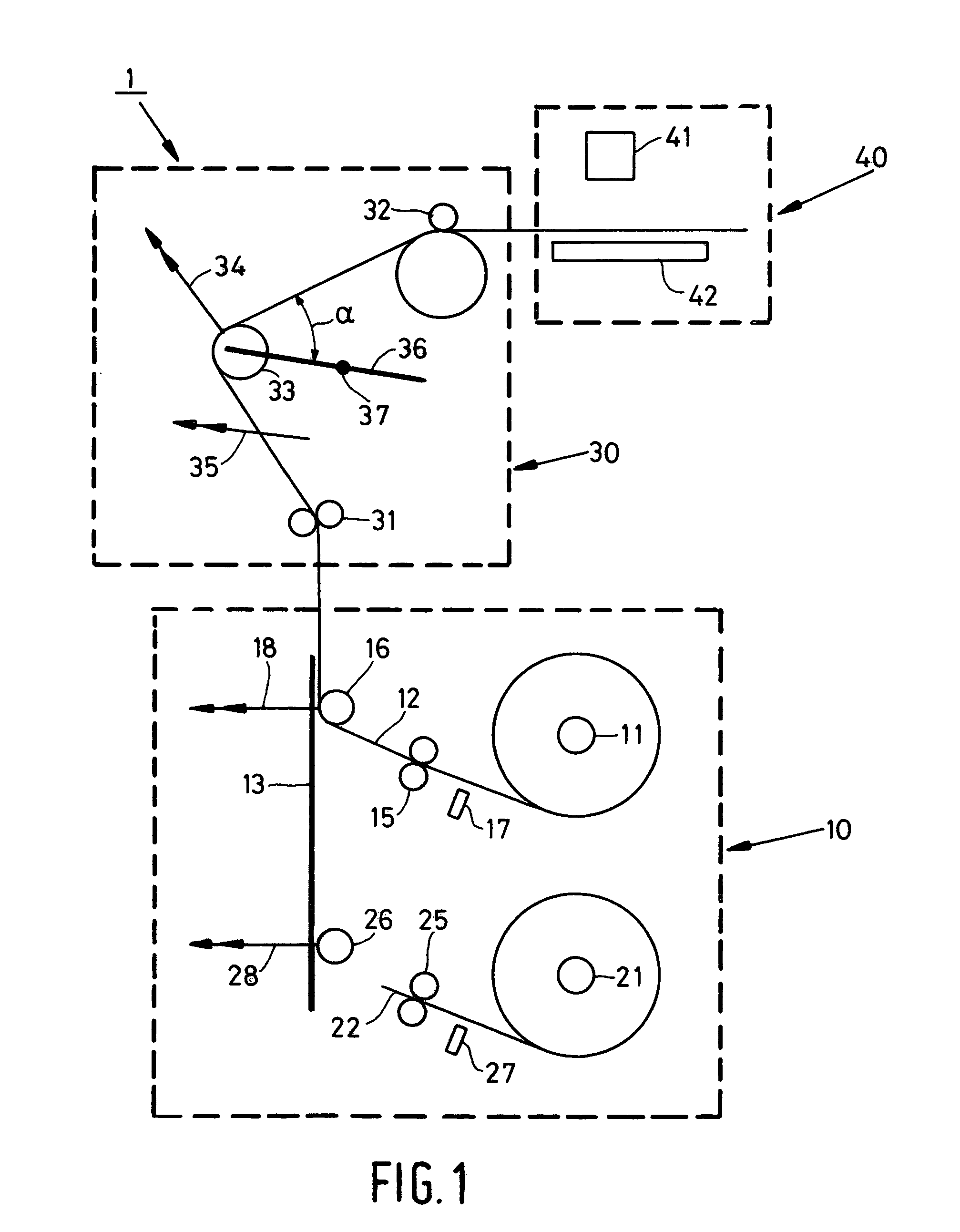Method of printing a substrate with an inkjet printer, and an inkjet printer suitable for performing this method
a substrate and inkjet printing technology, applied in the direction of printing, printing mechanisms, recording devices, etc., can solve the problems of less accurate mechanical tolerances and easy obviation of problems, and achieve the effect of minimizing any build-up of tension in the substrate, low resistance to movement of the guide element, and adequate resistance to movemen
- Summary
- Abstract
- Description
- Claims
- Application Information
AI Technical Summary
Benefits of technology
Problems solved by technology
Method used
Image
Examples
Embodiment Construction
[0020]FIG. 1 is a diagram of a printer according to the present invention. This printer is provided with the supply unit 10, which serves for the storage and delivery of the substrate for printing. In addition, this printer includes a transport unit 30 which transports the substrate from the supply unit 10 to the print engine 40. Unit 30 also provides accurate positioning of the substrate in the print zone formed between the print surface 42 and the inkjet printhead 41. In this embodiment, print engine 40 is a conventional engine which includes printhead 41, which is constructed from a number of separate sub-heads, each of one of the colors: black, cyan, magenta and yellow. Printhead 41 has only a limited printing range so that it is necessary to print the image on the substrate in different sub-images. To this end, the substrate is transported in increments in each case so that a new part of the substrate can be printed in the print zone. In the example illustrated, the substrate 1...
PUM
 Login to View More
Login to View More Abstract
Description
Claims
Application Information
 Login to View More
Login to View More - R&D
- Intellectual Property
- Life Sciences
- Materials
- Tech Scout
- Unparalleled Data Quality
- Higher Quality Content
- 60% Fewer Hallucinations
Browse by: Latest US Patents, China's latest patents, Technical Efficacy Thesaurus, Application Domain, Technology Topic, Popular Technical Reports.
© 2025 PatSnap. All rights reserved.Legal|Privacy policy|Modern Slavery Act Transparency Statement|Sitemap|About US| Contact US: help@patsnap.com



